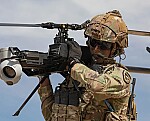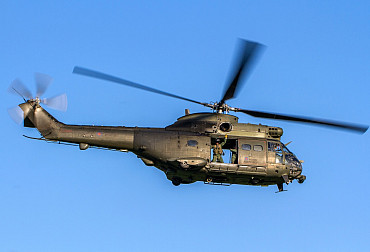U.S. deploys B-52 bombers and warships to bolster presence in the Middle East
In response to the ongoing conflicts in the Middle East and heightened regional tensions, the United States is reinforcing its military presence. Defense Secretary Lloyd Austin has ordered the deployment of bomber aircraft, fighter jets, tanker aircraft, and additional Navy warships, according to a Pentagon announcement on Friday. The move follows the planned return of the aircraft carrier Abraham Lincoln and its strike group, which are expected to leave the region shortly.

Reinforcing Strategic Power
The deployment includes B-52 Stratofortress bombers, a squadron of fighter jets, and Navy destroyers. This move signals a strategic response to safeguard American interests and support allied nations. Pentagon Press Secretary Maj. Gen. Pat Ryder emphasized that these assets are expected to arrive in the coming months, with a focus on maintaining a robust military presence as the Abraham Lincoln heads back to its home port in San Diego.
Context of Regional Conflicts
The military reinforcement aligns with ongoing tensions in the Middle East, particularly in response to Israel’s conflict with Hamas in Gaza and Hezbollah in Lebanon. A recent retaliatory strike against Iran targeted a site allegedly linked to Tehran’s ballistic missile and space programs. The U.S. has consistently reiterated its commitment to Israel's security and to the protection of American and allied interests, including defense against Yemen-based Houthi attacks on vessels in the Red Sea.
Demonstrating Global Response Capabilities
Ryder highlighted Austin's commitment to deploying forces quickly in response to emerging national security threats. The recent deployment follows previous missions of nuclear-capable B-52 bombers in the region, which act as deterrents, particularly to Iran. The Pentagon did not specify the exact number of ships and aircraft involved, though there is an expectation of an overall reduction in U.S. personnel in the region due to the carrier's departure.
Temporary Gap in Carrier Presence
With the departure of the Abraham Lincoln strike group, there will be a temporary absence of an aircraft carrier in the Middle East. This gap will be mitigated by the deployment of Navy destroyers capable of intercepting ballistic missiles, likely sourced from either the Indo-Pacific or Europe. These destroyers will help maintain strategic deterrence until the arrival of the aircraft carrier Harry S. Truman, which is expected to redeploy to the Mediterranean Sea.
Conclusion
This latest deployment underscores the U.S. military’s flexible, rapid-response capabilities to address security challenges and support allies. As regional conflicts continue, these actions signal both reassurance to allies and a strong deterrence message to adversaries.










